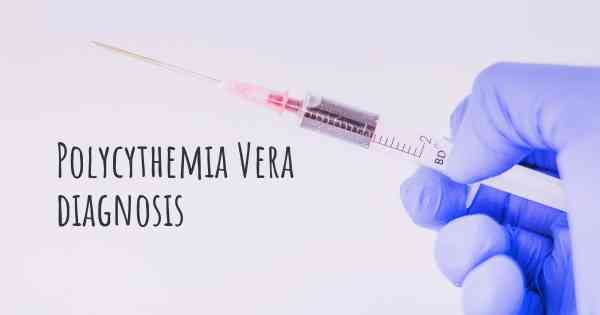How is Polycythemia Vera diagnosed?
See how Polycythemia Vera is diagnosed. Which specialists are essential to meet, what tests are needed and other useful information for the diagnosis of Polycythemia Vera

Diagnosis of Polycythemia Vera
Polycythemia Vera (PV) is a rare blood disorder characterized by the overproduction of red blood cells in the bone marrow. It is important to diagnose PV early to prevent complications and initiate appropriate treatment. The diagnosis of PV involves a combination of clinical evaluation, laboratory tests, and bone marrow examination.
Clinical Evaluation
The first step in diagnosing PV is a thorough clinical evaluation by a healthcare professional. The doctor will review the patient's medical history, including any symptoms experienced and family history of blood disorders. They will also perform a physical examination to check for signs of PV, such as an enlarged spleen or liver.
Laboratory Tests
Laboratory tests play a crucial role in the diagnosis of PV. The following tests are commonly used:
- Complete Blood Count (CBC): This test measures the levels of red blood cells, white blood cells, and platelets in the blood. In PV, the red blood cell count is usually elevated.
- Peripheral Blood Smear: A blood sample is examined under a microscope to assess the size, shape, and appearance of the red blood cells. In PV, the red blood cells may appear enlarged and abnormal.
- Genetic Testing: Certain genetic mutations, such as the JAK2 mutation, are commonly associated with PV. Genetic testing can help confirm the presence of these mutations.
- Erythropoietin Level: Erythropoietin is a hormone that stimulates the production of red blood cells. In PV, the erythropoietin level is typically low.
- Bone Marrow Biopsy: A bone marrow biopsy is often performed to confirm the diagnosis of PV. During this procedure, a small sample of bone marrow is extracted and examined under a microscope. PV is characterized by an increased number of mature red blood cells in the bone marrow.
Additional Tests
In addition to the above tests, the doctor may order additional tests to rule out other possible causes of the symptoms. These may include:
- Iron Studies: Iron levels in the blood are measured to assess iron deficiency or overload.
- Coagulation Studies: These tests evaluate the blood's ability to clot and may help identify any abnormalities.
- Ultrasound or Imaging: Imaging tests, such as ultrasound or CT scan, may be performed to assess the size and condition of the spleen and liver.
Consultation with a Hematologist
Once the diagnosis of PV is confirmed, the patient is usually referred to a hematologist, a specialist in blood disorders. The hematologist will further evaluate the patient's condition, determine the stage of PV, and develop an appropriate treatment plan.
Early diagnosis and treatment of Polycythemia Vera are crucial for managing the condition and preventing complications. If you suspect you may have PV or are experiencing symptoms such as fatigue, headaches, or itching, it is important to consult a healthcare professional for a proper evaluation.
Posted Feb 26, 2017 by Joyce May 550
Posted Sep 16, 2017 by Patricia 2000








